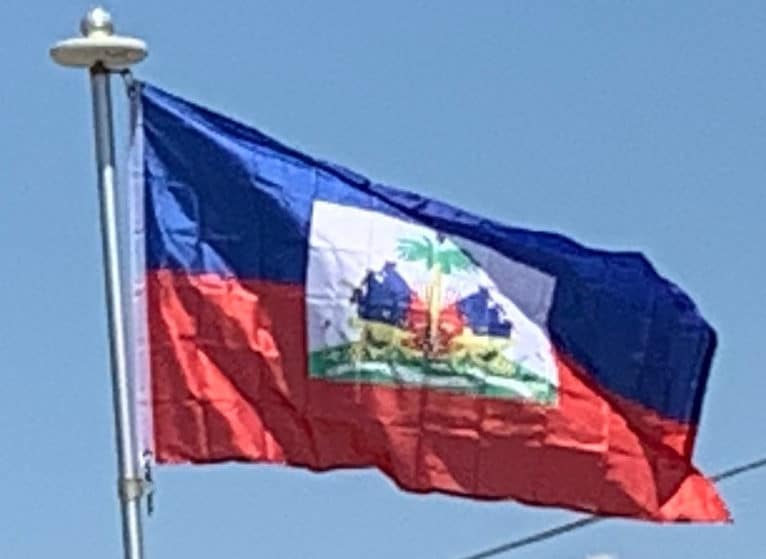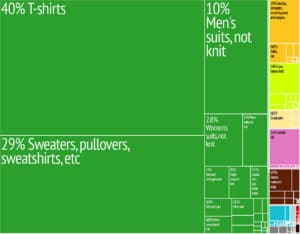
Following the disputed 2000 election and accusations about President Aristide’s rule, US aid to the Haitian government was cut off between 2001 and 2004. After Aristide’s departure in 2004, aid was restored and the Brazilian army led a United Nations Stabilization Mission in Haiti peacekeeping operation. After almost four years of recession, the economy grew by 1.5% in 2005. In September 2009, Haiti met the conditions set out by the IMF and World Bank’s Heavily Indebted Poor Countries program to qualify for cancellation of its external debt.
More than 90 percent of the government’s budget comes from an agreement with Petrocaribe, a Venezuela-led oil alliance.
Haiti received more than US$4 billion in aid from 1990 to 2003, including US$1.5 billion from the United States. The largest donor is the US, followed by Canada and the European Union. In January 2010, following the earthquake, US President Barack Obama promised US$1.15 billion in assistance. European Union nations pledged more than €400 million (US$616 million). Neighboring Dominican Republic has also provided extensive humanitarian aid to Haiti, including the funding and construction of a public university, human capital, free healthcare services in the border region, and logistical support after the 2010 earthquake.
Haiti is the world’s leading producer of vetiver, a root plant used to make luxury perfumes, essential oils and fragrances, providing for half the world’s supply. Roughly 40–50% of Haitians work in the agricultural sector. Haiti relies upon imports for half its food needs and 80% of its rice.
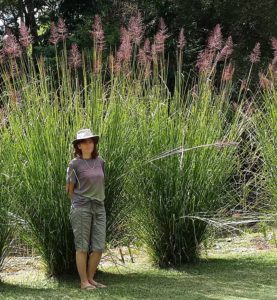
Haiti exports crops such as mangoes, cacao, coffee, papayas, mahogany nuts, spinach, and watercress. Agricultural products comprise 6% of all exports. In addition, local agricultural products include maize, beans, cassava, sweet potato, peanuts, pistachios, bananas, millet, pigeon peas, sugarcane, rice, sorghum, and wood.
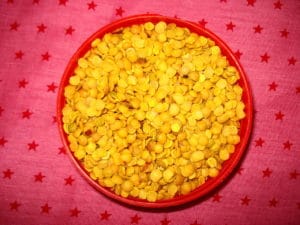
The tourism market in Haiti is undeveloped and the government is heavily promoting this sector. Haiti has many of the features that attract tourists to other Caribbean destinations, such as white sand beaches, mountainous scenery and a year-round warm climate, however the country’s poor image overseas, at times exaggerated, has hampered the development of this sector.
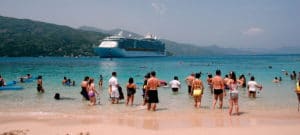
In 2014, the country received 1,250,000 tourists (mostly from cruise ships), and the industry generated US$200 million in 2014.
Transportation:
Haiti has two main highways that run from one end of the country to the other. The northern highway, Route Nationale No. 1 (National Highway One), originates in Port-au-Prince, winding through the coastal towns of Montrouis and Gonaïves, before reaching its terminus at the northern port Cap-Haïtien. The southern highway, Route Nationale No. 2, links Port-au-Prince with Les Cayes via Léogâne and Petit-Goâve. The state of Haiti’s roads are generally poor, many being potholed and becoming impassable in rough weather.
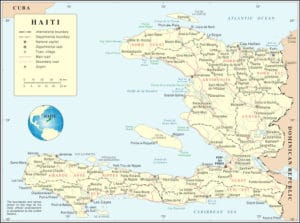
In the past, Haiti used rail transport, however the rail infrastructure was poorly maintained when in use and cost of rehabilitation is beyond the means of the Haitian economy. In 2018 the Regional Development Council of the Dominican Republic proposed a “trans-Hispaniola” railway between both countries.
